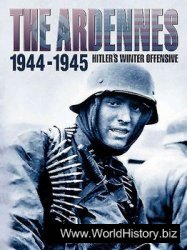Make more money butchering the cattle in Chicago and shipping the meat.
At first, to prevent spoilage, Swift could ship only during winter months. But then he hired an engineer who developed a refrigerated railroad car that made it possible to ship year-round. As hungry workers swelled the size of Eastern cities, Swift & Co. made great profits by shipping huge quantities of meat to feed them.

Visualizing © istory
A Marketing Goods Mass production of consumer goods, such as hats, combined with transportation improvements inspired entrepreneurs to print merchandise catalogs and open mail-order stores. Why were big businesses able to seii for less than local companies?
Fruit, among them—came to dominate their industries and sold products not just nationwide but to the entire world.
In attaining success, however, many entrepreneurs showed few scruples in driving competitors out of business. Their tactics included evading the law, bribing officials, destroying labor unions, and devastating the environment. Some entrepreneurs commonly sold products at below their cost until local businesses were forced to close down or sell out.
Mixed Feelings Toward Big Business
The American public, therefore, had mixed feelings about big business and its leaders. Americans worried about the corrupting influence of wealth and power. Yet others admitted that they benefited from big business's efficiency, its lower prices, and the jobs it created. Historian Vernon L. Par-rington said of the entrepreneurs:
Ii
These new Americans were primitive souls, ruthless, predatory, capable, single-minded men; rogues and rascals often, but never feeble, never hindered by petty scruples, never given to puling [whimpering] or whining.... Analyze the most talked-of men of the age and one is likely to find a splendid audacity coupled with immense wastefulness. A note of tough-minded-ness marks them.... They fought their way encased in rhinoceros hides.
Success in business became a best-selling theme in popular fiction. Horatio Alger became wealthy himself when he wrote novels like Mark the Match Boy, Tattered Tom, and more than 100 others—all "rags-to-rich-es" stories of young men who became successful in business because of hard work and lucky breaks.
American law allowed the formation of business corporations, and conditions in the United States encouraged their existence.
As a business form, the corporation offered a number of advantages over a partnership or a sole proprietorship. The corporation had a permanence that lasted beyond the lives of its owners or stockholders. That meant company managers could confidently plan far into the future.
By selling stocks and bonds, a corporation could raise the capital, or investment money, for its operations. Small amounts of capital from many individual investors could be pooled into the huge sums needed to start or expand a large company. In that way no one investor would have to take a big financial risk. To reduce risk even more, investors could spread it out by purchasing stock in several corporations. One specialized form of corporation, the holding company, became very popular. Holding companies manufactured no products and had no customers. They existed only to own stock in other corporations. Through holding companies, wealthy capitalists could own controlling interests in many businesses.
Other companies were organized into trusts. A trust was formed when several companies gave control of their operations to a single board of trustees. The shareholders of each individual company continued to own it and keep its profits, but management of all companies in the trust was in the same hands. Through holding companies and trusts, entrepreneurs formed the huge business combinations that dominated the late nineteenth century. Some combinations were able to restrict or prevent competition among their members.
Business consolidation—combining companies into one unit—took various forms. Sometimes companies were consolidated by horizontal integration, in which several firms engaged in the same kind of business were joined together. If a horizontal combination became large enough, it could achieve a monopoly of that industry.
Companies also were consolidated by vertical integration, which joined businesses engaged in different but related activities. A vertical combination, for example, might include under the same ownership individual companies that provided raw materials, transported those raw materials to factories, manufactured a product from those raw materials, and distributed and sold the finished product.
A horizontal combination, once established, was able to expand vertically because of the control its size gave it over both suppliers and distributors. Similarly, a vertical combination could become so efficient that it expanded horizontally by buying its competitors, forcing them into trusts, or driving them out of business.
Business Practices
.z
V
|
Successful |
Objectionable | |
1. Define corporation, holding company, trust, horizontal integration, vertical integration.
2. Contrasting Re-create the diagram shown here, and describe the practices that made businesses both successful and the objects of criticism.
3. Evaluating Change How might the shift to the prevalence of big business work to the advantage or disadvantage of a consumer?
4. Economics Keep track of all the purchases you make for one week. List the name of the businesses that sold them to you. Indicate whether you think each business is small, medium, or large.
????????????????????????????????????




 World History
World History









